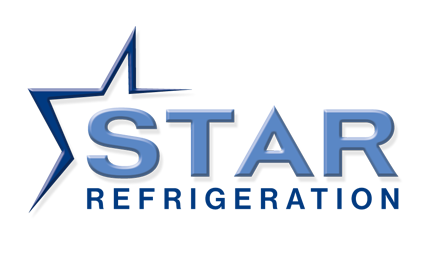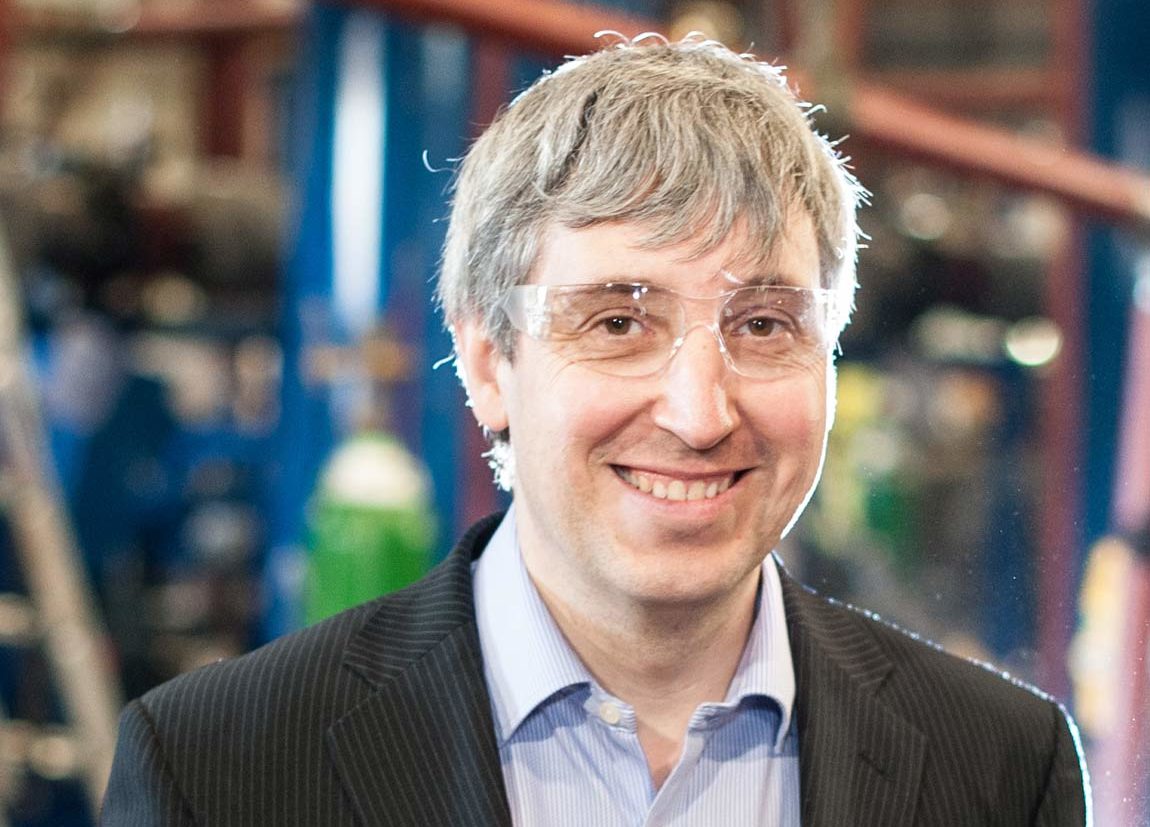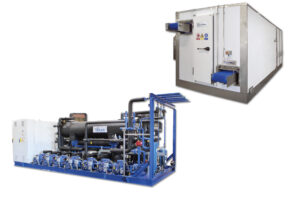Carbon Dioxide (R744) is an odourless gas and can cause harm when incidents occur resulting in its release. For owners and operators of carbon dioxide refrigerated systems it is essential to understand best practice, in order to minimise these risks.
In the UK, owners of carbon dioxide refrigeration systems should follow legally binding Statutory Instruments (SI) which require equipment to be risk assessed by competent persons during its lifetime to ensure it is safe to operate. These regulations are enforceable by the Health and Safety Executive (SHE) and published across the following three documents:
- The Management of Health and Safety at Work Regulations, 1999 (MHSWR)
- The Pressure System Safety Regulations, 2000 (PSSR)
- The Dangerous Substance and Explosive Atmosphere Regulations, 2002 (DSEAR)
The British Standards Institution (BSI), the organisation appointed by the UK Government as the national standards body, has established that European Directives for carbon dioxide refrigeration systems must be given the status of national standards. Whilst European standards are not legally binding, the safety requirements detailed inside them are viewed by industry as “reasonably practicable” and therefore must be implemented to comply with regulations. These are:
- EN378: Refrigerating Systems and Heat Pumps – Safety and Environment Requirements (Parts 1-4)
- EN12693: Refrigeration Systems and Heat Pumps – Safety and Environmental Requirements – Positive Displacement Refrigerant Compressors
The legislation gives owners and users of carbon dioxide equipment legally binding responsibilities but there is little direct guidance in the regulations as to the exact requirements. The duty of ensuring that work equipment complies with regulations falls first and foremost to the employer, who must provide a safe working environment to everyone on their site as underlined in DSEAR : “Every employer shall ensure that risk is either eliminated or reduced so far as is reasonably practicable”.
The HSE publishes approved codes of practice for the regulations but this still leaves an element of expert interpretation on how the requirements of legislation can be implemented.
To cover this gap, the European standard EN378, which lists safety requirements, outlines the specifications cooling and heating systems are required to meet. While EN378 is comprehensive, including provision for gas detection, ventilation and automatic shut off valves, the guidance it contains is not always clear to many working with refrigeration systems due to the omission of a specific systematic approach to assessing of risk, emergency planning and facility awareness based on industry good practice.
When carrying out a carbon dioxide hazard assessment, the outcome of the assessment is only as good as the knowledge of the assessor and their ability to identify the risks. A standard hazard assessment approach has been developed by Star Technical Solutions for assessing carbon dioxide refrigeration systems to ensure that all aspects of legislation and good practice are reviewed and recorded.
What are the risks?
Carbon dioxide is a colourless, odourless gas, denser than the air that occurs naturally in the earth’s atmosphere. A person typically inhales and exhales air with carbon dioxide concertation of <0.05% and 4%. Whilst carbon dioxide toxicity is caused by displacing oxygen, lending to asphyxiation, the immediate danger to life would need to be in the order of 50% v/v. However carbon dioxide can cause an immediate threat to life at only 15% in air due to the toxicological impact it has on the body. The inhalation of Carbon dioxide increases the acidity in the blood and thus triggers adverse effects on the respiratory, cardiovascular and central nervous systems. The reported immediate effect of carbon dioxide exposure by inhalation:
2 to 5% Headache, dizziness, sweating, shortness of breath
6 to 10% Hyperventilation, tachycardia, worsening dizziness
11 to 17% Drowsiness, muscle twitching, loss of consciousness
>17% Convulsions, coma and death
However the likelihood of death due to exposure of carbon dioxide concentration is time dependent:
| Inhalation Exposure Time |
1-5% Fatalities
Concentration in air v/v |
50% Fatalities Concentration in air v/v |
| 60 min |
6.3% |
8.4% |
| 30 min |
6.9% |
9.2% |
| 20 min |
7.2% |
9.6% |
| 10 min |
7.9% |
10.5% |
| 5 min |
8.6% |
11.5% |
| 1 min |
10.5% |
14% |
Inhalation Exposure Time versus Carbon dioxide Concentration
The UK HSE (EH40/2005) workplace exposure limit threshold limit value for an 8-hour period is 5000ppm, and for a 15-minute period, 15,000ppm.
The priority of any risk-based analysis would identify that keeping carbon dioxide releases to a minimum reduced risk. A refrigeration system that does not release carbon dioxide will not result in areas containing toxic gas atmospheres and therefore can be considered safe. Stopping all potential carbon dioxide releases is not possible and safety systems are still required, however the goal must be to keep potential carbon dioxide releases to a minimum. In the event of a carbon dioxide release the safety system must be adequate to keep this risk to a minimum.
What are the safety requirements?
There are different requirements for safety systems for occupied spaces, machinery rooms and unoccupied spaces locations detailed in EN378.
Occupied locations and machinery rooms
For occupied locations with general public access, such as supermarkets, the refrigerant charge limit is calculated using by multiplying the toxicity limit by the room volume. Adding safety measures, such as ventilation, shut off or gas detection valves, increases the permitted charge.
For all other access and locations areas, there is no charge restriction for the use of carbon dioxide in occupied areas. The carbon dioxide quantity could be 50kg or 1 million tons. It is only logical that special provision (added safety measures) must be included for occupied spaces.
Current guidelines list machinery rooms as being unoccupied spaces without general access. Best practice here is to ensure the areas are airtight from other spaces. These types of locations should only be accessed by trained employees and must have gas detection and ventilation systems with extractor fans that increase emergency air flow if the carbon dioxide concentration exceeds safe limits.
Open air and unoccupied spaces
According to EN378, open air locations are “rooms where at least one of the longer walls is open to the outside air by means of louvres with 75% free area and covering at least 80% of the wall area”. Even though these areas are open to outside air, they may still require gas detection and ventilation systems – and it’s crucial to check to ensure carbon dioxide isn’t stagnating.
EN378 requires unoccupied spaces to meet the same requirements as machinery rooms with 4 air charges per hour for occupancy ventilation and also the calculated emergency ventilation requirement. However where extract hood are installed above non permanent joints the ventilation can be greatly reduced. Extract hoods must be designed to account for the possible of a carbon dioxide releases when a technician is working on equipment inside the hood.
Relief valves
Wherever carbon dioxide relief valves are present, there’s a risk solid material can block valve vent lines. To overcome this, the valve outlet pipework arrangement should be kept simple with no branches, tees, or other areas where this material could deposit following a discharge.




